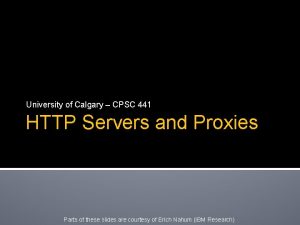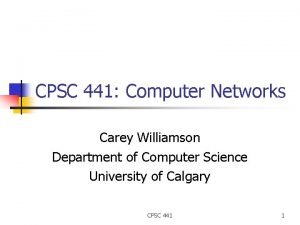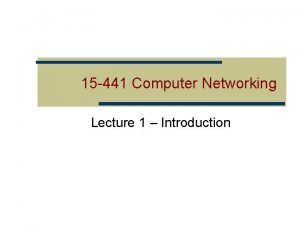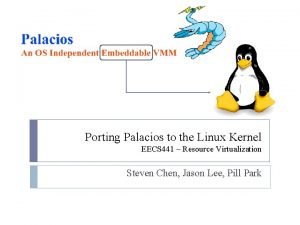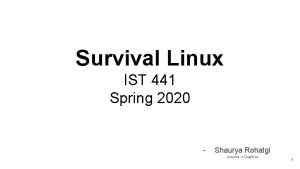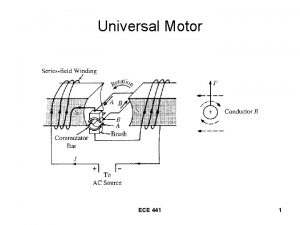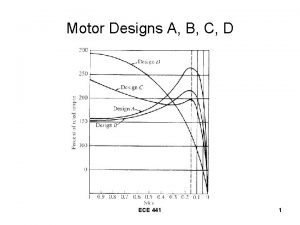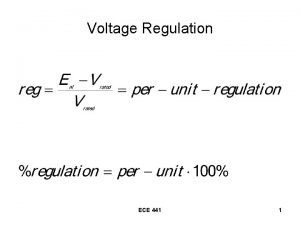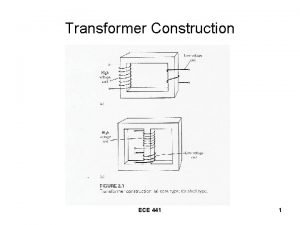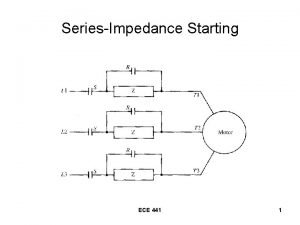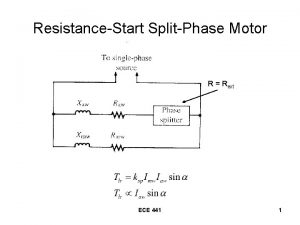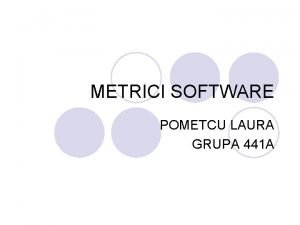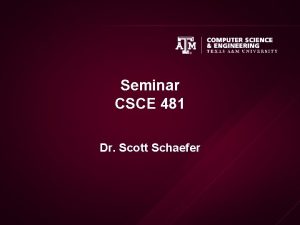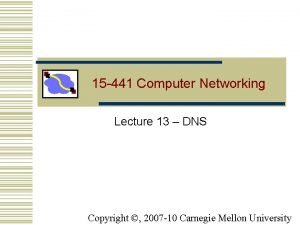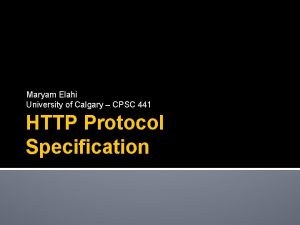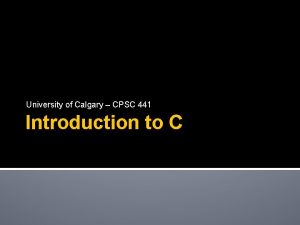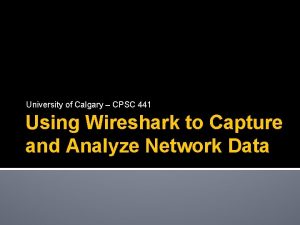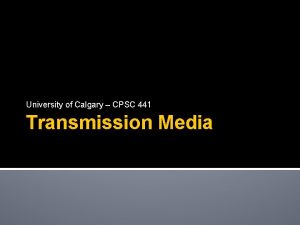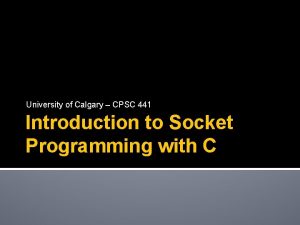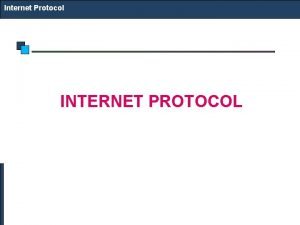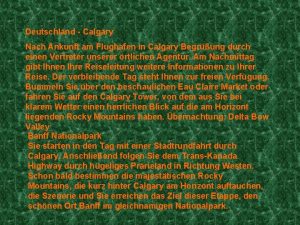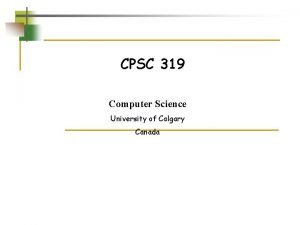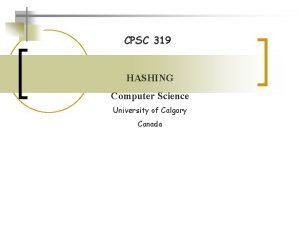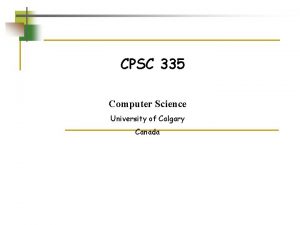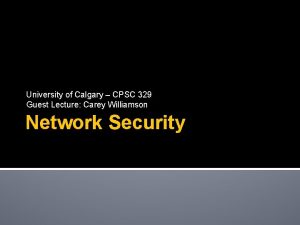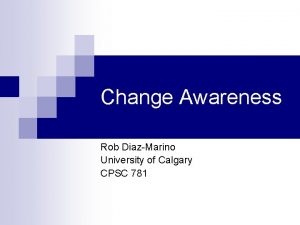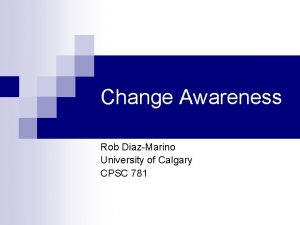University of Calgary CPSC 441 The Internet Protocol























- Slides: 23

University of Calgary – CPSC 441 The Internet Protocol

The Network Layer � IP (Internet Protocol) is a Network Layer Protocol. � RFC 791 provides the specification for IP. application transport network data link physical 1. Send data 2. Receive data application transport network data link physical Network Layer 2

IP: The Waist of the Hourglass � IP is the waist of the hourglass of the Internet protocol stack. � Multiple higher-layer protocols � Multiple lower-layer protocols � One common protocol at the network layer for data transmission. 3

Routers �IP is the highest layer protocol which is implemented at both routers and hosts 4

Best Effort Protocol � IP provides an unreliable, connectionless, best effort service (also called: “datagram service”). Unreliable: no guarantee for delivery of packets Connectionless: Each packet (“datagram”) is handled independently. IP is not aware that packets between hosts may be sent in a logical sequence Best effort: IP does not make guarantees on the service (no throughput guarantee, no delay guarantee, etc. ) � Consequences: Higher layer protocols have to take care of delivery guarantees. 5

IPv 4 & IPv 6 Datagram 6

IP Versions � The first publicly used version of the Internet Protocol was version 4 (IPv 4) Address space: 32 bits (~4. 3 billion addresses) Initially it was thought to be enough! � Address exhaustion On February 3, 2011, the Internet Assigned Numbers Authority (IANA) officially depleted the global pool of completely fresh blocks of addresses. Address exhaustion was a concern as early as the 1990 s. � IPv 6 is the next generation IP that tries to address the shortcomings of IPv 4 Address space: 128 bits (~79 octillion times more than IPv 4) Designed to live alongside IPv 4 7

What About Version 5? � It does not exist. It is in fact intentionally skipped to avoid confusion, or at least to rectify it. IP version 5 relates to an experimental TCP/IP protocol called the Internet Stream Protocol, Version 2, originally defined in RFC 1190. This protocol was originally seen by some as being a peer of IP at the Internet Layer in the TCP/IP architecture, and in its standard, these packets were assigned IP version 5 to differentiate them from “normal” IP packets (version 4). This protocol apparently never went anywhere, but to be absolutely sure that there would be no confusion, version 5 was skipped over in favor of version 6. 8

A Bit of History “The decision to put a 32 -bit address space on there was the result of a year's battle among a bunch of engineers who couldn't make up their minds about 32, 128, or variable-length. And after a year of fighting, I said--I'm now at ARPA, I'm running the program, I'm paying for this stuff, I'm using American tax dollars, and I wanted some progress because we didn't know if this was going to work. So I said: OK, it's 32 bits. That's enough for an experiment; it's 4. 3 billion terminations. Even the Defense Department doesn't need 4. 3 billion of everything and couldn't afford to buy 4. 3 billion edge devices to do a test anyway. So at the time I thought we were doing an experiment to prove the technology and that if it worked we'd have opportunity to do a production version of it. Well, it just escaped! It got out and people started to use it, and then it became a commercial thing. So this [IPv 6] is the production attempt at making the network scalable. ” - Vint Cerf, one of the “fathers of the Internet” From: Google IPv 6 Conference 2008 9

IPv 4 Datagram Fields � Version (4 bits): For IPv 4, this has a value of 4 (hence the name IPv 4) � Internet Header Length (4 bits): � Number in 32 -bit words (4 bits) of the header This can also be interpreted as the payload offset IP header can have a variable number of options The minimum value for this field is 5 (RFC 791) or 20 bytes; the maximum length is 15 words = 60 bytes Differentiated Services Code Point (6 bits): Recently redefined by RFC 2474 for Differentiated services (Diff. Serv). Used for real-time data streaming like Vo. IP. 10

IPv 4 Datagram Fields � Explicit Congestion Notification (2 bits): An optional feature that is defined by RFC 3168 for notification of network congestion without dropping packets. Both endpoints must support it and be willing to use it Only effective when supported by the underlying network � Total Length (16 bits): The entire IP datagram size, including the header and payload. Minimum-length is 20 bytes (minimal header with no payload) 11

IPv 4 Datagram Fields � Identification (16 bits): Used primarily for uniquely identifying the group of fragments of a single IP datagram � Unique identification of a datagram from a host. Incremented whenever a datagram is transmitted Flags (3 bits): Bit field used to control or identify fragments Bit 0: Reserved; must be zero Bit 1: Don’t fragment (DF) ▪ If set, packets are dropped if they need to be fragmented Bit 2: More fragments (MF) ▪ Zero for non-fragmented packets; for fragmented packets, all but the last packet has this flag set; the last packet will have a non-zero “Fragment Offset” field 12

IPv 4 Datagram Fields � Fragment Offset (13 bits): Measured in units of 64 -bit words (8 byte) � Time To Live (8 bits): Limits a datagram’s lifetime to break routing circles Specified in seconds but in practice is used as a hop count (decrement by 1 at each router) and set to 64 at the start When TTL is zero, the router should discard the packet; typically an ICMP Time Exceeded message is sent to the sender 13

IPv 4 Datagram Fields � Protocol (8 bits): Defines the protocol used in the payload There are over 140 protocols defined (TCP is 0 x 06; UDP is 0 x 11) � Header Checksum: the 16 -bit one's complement of the one's complement sum of all 16 -bit words in the header. For computing the checksum, the value of the checksum field is zero. � Options: not often used Used to control fragmenting, routing, debugging, security, etc. Must be padded so that the header is divisible by 32 bits (4 bytes) 14

Maximum Transmission Unit � Maximum size of IP datagram is 65535, but the data link layer protocol generally imposes a limit that is much smaller � Ethernet frames have a maximum payload of 1500 bytes IP datagrams encapsulated in Ethernet frame cannot be longer than 1500 bytes � The limit on the maximum IP datagram size, imposed by the data link protocol is called maximum transmission unit (MTU) � MTUs for various data link protocols: Ethernet: 1500 FDDI: 4352 802. 3: 1492 ATM AAL 5: 9180 802. 5: 4464 802. 11(WLAN): 2272 15

IP Fragmentation � What if the size of an IP datagram exceeds the MTU? IP datagram is fragmented into smaller units � What if the route contains networks with different MTUs? MTUs: FDDI: 4352 � Ethernet: 1500 Fragmentation: IP router splits the datagram into several datagram Fragments are reassembled at receiver 16

Fragmentation / Reassembly �Fragmentation can be done at the sender or at intermediate routers �The same datagram can be fragmented several times. �Reassembly of original datagram is only done at destination hosts !! 17

Example of Fragmentation � A datagram of 4000 bytes from a network with MTU 4000 to 1500 length ID fragflag =4000 =x =0 offset =0 One large datagram becomes several smaller datagrams length ID fragflag =1500 =x =1 offset =0 length ID fragflag =1500 =x =1 offset =1480 length ID fragflag =1040 =x =0 offset =2960 18

IPv 6 Datagram Fields � Version (4 bits): For IPv 6, this has a value of 6 (0110) � Traffic Class (8 bits): The same as the redefined IPv 4 fields: The first 6 bits are differentiated services for real-time data streaming The last 2 bits are for ECN (Explicit Congestion Notification). 19

IPv 6 Datagram Fields � Flow Label (20 bits): Originally created for giving real-time applications special service. When set to a non-zero value, it serves as a hint to routers and switches with multiple outbound paths that these packets should stay on the same path so that they will not be reordered. It has further been suggested that the flow label be used to help detect spoofed packets. 20

IPv 6 Datagram Fields � Payload Length (16 bits): The size of the payload in octets, including any extension headers. � This is different from IPv 4 as it does not include the fixed IPv 6 header The length is set to zero when a Hop-by-Hop extension header carries a Jumbo Payload option A Jumbo Payload has a 32 bit length in the Hop-By-Hop Options extension header allowing packets up to 4 GB in size! Next Header (8 bits): The same as the IPv 4 Protocol field The extension headers are described here as protocols 21

IPv 6 Datagram Fields � Hop Limit (8 bits): Replaces the time to live field of IPv 4 � Fragmented Packets � This value is decremented by one at each intermediate node visited by the packet. When the counter reaches 0 the packet is discarded. Notice there is no fragmentation fields, so routers cannot fragment IPv 6 packets as they do for IPv 4. Hosts may use the fragmentation extension to send packets larger than an MTU IPv 6 also does not have a checksum field 22

Resources � Slides from the book: “Mastering Computer Networks: An Internet Lab Manual”, J. Liebeherr, M. El Zarki, Addison-Wesley, 2003. � Slides from the book: “Computer Networking: A Top Down Approach”, 5 th edition. Jim Kurose, Keith Ross Addison-Wesley, 2009. � RFC 791: http: //tools. ietf. org/pdf/rfc 791. pdf � Wikipedia http: //en. wikipedia. org/wiki/IPv 4 http: //en. wikipedia. org/wiki/IPv 6_packet 23
 Cpsc 441 u of c
Cpsc 441 u of c Cpsc 441 assignment 1
Cpsc 441 assignment 1 Cpsc 441
Cpsc 441 Cpsc 585
Cpsc 585 Cpsc 441
Cpsc 441 Jupiter radius miles
Jupiter radius miles Dchr paid family leave
Dchr paid family leave 15-441
15-441 Eecs 441
Eecs 441 Broad phase vs narrow phase
Broad phase vs narrow phase Ist 441
Ist 441 Ist 441
Ist 441 Lied 433
Lied 433 Ece 441
Ece 441 Ece 441
Ece 441 Voltage regulation
Voltage regulation Ece transformer
Ece transformer Ece 441
Ece 441 Ece441
Ece441 Calculati 441-(-15)2
Calculati 441-(-15)2 Ece 441
Ece 441 Csce 441
Csce 441 15441 cmu
15441 cmu Security architecture for the internet protocol
Security architecture for the internet protocol
